Jeremiah’s Symbolic Acts
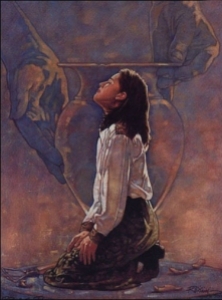 Many important judgments are recorded in unforgettable imagery throughout the book of Jeremiah. Jeremiah gave several prophecies that were accompanied by symbolic acts or allegories. The symbolic act, a staging of a prophetic message, is an interesting phenomenon associated with prophets, as, for example, the prophet Zedekiah’s wearing a set of iron horns (1 Kings 22:11), Ezekiel’s cutting his own hair, weighing it and then burning it (Ezekiel 5), Hosea’s marriage to Gomer (Hosea 1-3), Isaiah’s naming his sons (Isaiah 7-8), and Isaiah’s walking around Jerusalem shirtless and barefoot (Isaiah 20).
Many important judgments are recorded in unforgettable imagery throughout the book of Jeremiah. Jeremiah gave several prophecies that were accompanied by symbolic acts or allegories. The symbolic act, a staging of a prophetic message, is an interesting phenomenon associated with prophets, as, for example, the prophet Zedekiah’s wearing a set of iron horns (1 Kings 22:11), Ezekiel’s cutting his own hair, weighing it and then burning it (Ezekiel 5), Hosea’s marriage to Gomer (Hosea 1-3), Isaiah’s naming his sons (Isaiah 7-8), and Isaiah’s walking around Jerusalem shirtless and barefoot (Isaiah 20).
Jeremiah participated in several such symbolic acts, one involving a linen girdle (Jeremiah 13:1-11), another a potter at his wheel (Jeremiah 18), and he used a potter’s earthen bottle (Jeremiah 19-20), which the Lord interpreted for him allegorically. Jeremiah also wore a yoke (Jeremiah 27-28) and then sent it to the kings surrounding the nation of Israel, as a message to submit to the authority of the king of Babylon. A brief look at these symbolic actions can give us a further feel of the nature of Jeremiah’s prophecies.
The Linen Girdle (Jeremiah 13:1-11)
The Lord commanded Jeremiah to put a linen girdle on his loins and journey to the Euphrates, a distance of 350 miles, and hide the girdle in a hole in a rock. After he did this, many days later the Lord told him to go and retrieve it. Jeremiah discovered when he dug it up that “the girdle was marred … profitable for nothing” (Jeremiah 13:7). The Lord explained: “After this manner will I mar the pride of Judah, and the great pride of Jerusalem” (Jeremiah 13:9). At one level the meaning is clear: if Judah were to be involved with the Euphrates it would be to her downfall. The Lord went on to explain that Israel and Judah were like the girdle in that they were wrapped around the Lord as the girdle had been wrapped around Jeremiah (Jeremiah 13:11). Perhaps this is a reference to the fact that when Israel or Judah were no longer faithful to the Lord—symbolized by being wrapped around the waist—then they really were worthless and would eventually be destroyed. A nation that refused to listen to the voice of the Lord and worshiped false gods was to Jehovah just like the girdle—useless. Some have seen in the reference to the Euphrates River a foreshadowing to the eventual exile of the Jews to that land.
There is no record that anyone witnessed this event other than Jeremiah, and we can only imagine the impact this had on his prophetic understanding. Certainly it would have illustrated the close relationship between the Lord and his covenant people and the need for them to remain pure in order to be of any use or value to the Lord.
The Potter’s Wheel (Jeremiah 18)
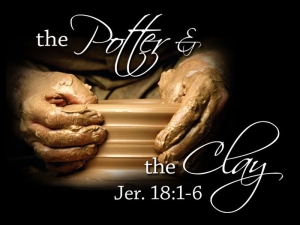 In another of the renowned images in Jeremiah, the Lord commanded him to go to the house of a potter and watch him work. The image of the work of the potter as an act of creation is well known throughout the Bible. In the statement in Genesis 2:7, “the Lord God formed man of the dust of the ground,” the verb used is יָצַר or yaw-tsar, the same verb used to mean forming a pot. This verb is used twice in Jeremiah 18:4, causing the reader to visualize the Lord “forming” man. This concept of God forming individuals is used elsewhere, as in Jeremiah’s call “before I formed thee in the belly” (Jeremiah 1:5), and “shall the clay say to him that fashioneth it, What makest thou?” (Isaiah 45:9), and as a reference to the Lord’s “forming” his people Israel (Isaiah 27:11; 43:1, 21).
In another of the renowned images in Jeremiah, the Lord commanded him to go to the house of a potter and watch him work. The image of the work of the potter as an act of creation is well known throughout the Bible. In the statement in Genesis 2:7, “the Lord God formed man of the dust of the ground,” the verb used is יָצַר or yaw-tsar, the same verb used to mean forming a pot. This verb is used twice in Jeremiah 18:4, causing the reader to visualize the Lord “forming” man. This concept of God forming individuals is used elsewhere, as in Jeremiah’s call “before I formed thee in the belly” (Jeremiah 1:5), and “shall the clay say to him that fashioneth it, What makest thou?” (Isaiah 45:9), and as a reference to the Lord’s “forming” his people Israel (Isaiah 27:11; 43:1, 21).
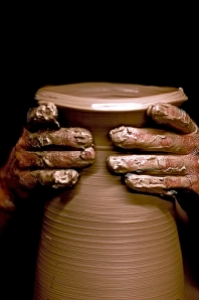 As Jeremiah watched the potter, who was molding a pot on a potter’s wheel, the pot “was marred in the hand of the potter: so he made it again another vessel, as seemed good to the potter to make it” (Jeremiah 18:4). The Lord explained: “O house of Israel, cannot I do with you as this potter? saith the Lord. Behold, as the clay is in the potter’s hand, so are ye in mine hand, O house of Israel” (Jeremiah 18:6). The Lord reaffirmed his power to intervene in human history with the same verbs known from Jeremiah’s call — that he has the power to “pluck up, and to pull down, and to destroy” (Jeremiah 18:7). At this time there was still hope for repentance, and the Lord promised those who would repent and return that he would “build” and “plant” them (Jeremiah 18:8-9).
As Jeremiah watched the potter, who was molding a pot on a potter’s wheel, the pot “was marred in the hand of the potter: so he made it again another vessel, as seemed good to the potter to make it” (Jeremiah 18:4). The Lord explained: “O house of Israel, cannot I do with you as this potter? saith the Lord. Behold, as the clay is in the potter’s hand, so are ye in mine hand, O house of Israel” (Jeremiah 18:6). The Lord reaffirmed his power to intervene in human history with the same verbs known from Jeremiah’s call — that he has the power to “pluck up, and to pull down, and to destroy” (Jeremiah 18:7). At this time there was still hope for repentance, and the Lord promised those who would repent and return that he would “build” and “plant” them (Jeremiah 18:8-9).
Apart from being an impressive illustration of the omnipotence of Jehovah, this image of the potter working with clay reinforces the covenant relationship of the Lord with his people. He has the power to form them as individuals and as a nation and to then destroy them and start over again at his discretion. In history, when the pot has become marred, the Lord has destroyed it and started over again. We see examples of this all throughout history: such as Noah’s Flood, the Scattering of Israel in 721 B.C. by the Assyrians, the destruction of the Nephite nation, and the Apostasy and the Restoration.
We do not know if this revelation was seen by any other person than Jeremiah, but the imagery is rich and full of options for discussion in the seminary classroom. Most of our students have worked with clay and have some experience with this type of analogy. As we examine how we are like clay and the Lord is like the potter, we can envision times in our lives when the Lord has had to mold us in ways that are unexpected. This has great discussion potential in the classroom!
The Potter’s Earthen Bottle (Jeremiah 19-20)
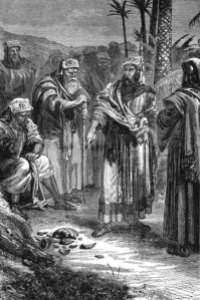
The third symbolic act is related to the imagery of the potter at his wheel, but the vessel destroyed is the finished product. Unlike the first two prophetic symbolic acts, this was apparently done for the public; their reaction is remarkable. Jeremiah was told to take an earthen bottle and go with some of the elders and priests to the Hinnom Valley, just south of Jerusalem. There he stated: “Hear ye the word of the Lord, O kings of Judah, and inhabitants of Jerusalem; Thus saith the Lord of hosts, the God of Israel; Behold, I will bring evil upon this place, the which whosoever heareth, his ears shall tingle” (Jeremiah 19:3). Jeremiah apportioned their acts of idolatry, many of which had become localized in the Hinnom Valley and Tophet. The Jews “have filled this place with the blood of innocents” (Jeremiah 19:4) referencing their sacrificing of their children at the high places of Tophet and Baal.
He then uttered the threats of the Lord of a great “slaughter”, destruction by the sword, their carcasses to be carrion, the city to become desolate, and the besieged in the city forced to eat the flesh of their sons and daughters (Jeremiah 19:6-9). All this is a reminder of the explicit prophecies in Deuteronomy 28 that were directed against the covenant people if they broke the covenant. Symbolic of this ruin, Jeremiah broke the earthen bottle and declared: “Thus saith the Lord of hosts; Even so will I break this people and this city, as one breaketh a potter’s vessel, that cannot be made whole again” (Jeremiah 19:11). Unlike the clay on the potter’s wheel (Jeremiah 18:1-6), the individuals represented by the finished vessel that was broken would not have a second chance but would be buried in Tophet until there was no more room. He prophesied that the Lord would “make this city as Tophet” (Jeremiah 19:12), in other words – you will reap your actions to the letter. As you have slaughtered your own children, so will you be caused to suffer. This is powerful imagery.
This symbolic act was a public affair, and the implications were instantly understood by those who witnessed his symbolic act. Jeremiah 20 recounts the persecution that Jeremiah suffered for delivering the word of the Lord to those who found the truth unpleasant. Pashur, the chief governor in the house of the Lord — a temple administrator who heard about the Jeremiah’s sermon, had Jeremiah beaten and put into stocks (Jeremiah 20:1-2). Jeremiah prophetically gave Pashur a new name, Magor-missabib (“Terror all around”), and prophesied that Pashur himself would witness the death of his friends and the capture of Jerusalem by the Babylonians and that he would go into exile where he would die with all of his friends “to whom thou hast prophesied lies” (Jeremiah 20:3-6). This is the last we hear of Pashur, perhaps because he was one of those sent in the deportation of 597 B.C.
The yoke (Jeremiah 27)
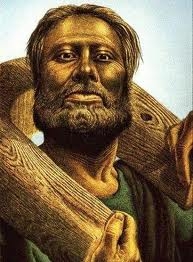 During his ministry, the Lord told Jeremiah to make himself into an impressive object lesson. Jeremiah was instructed to construct a yoke that animals wear out of a crossbar and straps, put it around his own neck, and wear it in the presence of King Zedekiah and Jerusalem’s representatives. How bizarre Jeremiah must have looked before these powerful men of influence! Jeremiah told them that if they did not voluntarily bow down and submit to the king of Babylon, as oxen in a yoke, the Lord would destroy them (Jeremiah 27:1-11).
During his ministry, the Lord told Jeremiah to make himself into an impressive object lesson. Jeremiah was instructed to construct a yoke that animals wear out of a crossbar and straps, put it around his own neck, and wear it in the presence of King Zedekiah and Jerusalem’s representatives. How bizarre Jeremiah must have looked before these powerful men of influence! Jeremiah told them that if they did not voluntarily bow down and submit to the king of Babylon, as oxen in a yoke, the Lord would destroy them (Jeremiah 27:1-11).
Jeremiah also sent a yoke to the kings of Edom, Moab, the Ammonites, Tyrus, and Zidon informing them that the God of Israel wills it that they submit to the authority of Babylon’s king. He prophesied: “that the nation and kingdom which will not serve the same Nebuchadnezzar the king of Babylon, and that will not put their neck under the yoke of the king of Babylon, that nation will I punish, saith the Lord, with the sword, and with the famine, and with the pestilence, until I have consumed them by his hand” (Jeremiah 27:8).
Jeremiah was a living witness of the symbolic acts that he lived out. He was pliable like the clay on the potter’s wheel and willing to literally wear the yoke of Christ in his service as a prophet to the Jews. He walked hundreds of miles in the service of his God to retrieve a girdle, a seemingly unimportant task from a worldly perspective. In these and many other instances, Jeremiah was pliable enough to do what the Lord commanded, no matter how peculiar, unpopular, or foolish it may have made him appear to his peers. How are we like Jeremiah? When do we face situations where we may appear strange to the world or the worldly? Sometimes what the Lord asks of His followers does not always make sense, but one thing is certain: time always vindicates the prophets.
Further reading:

Great post! I borrowed a few pictures from your page to my scripture study blog and linked it to you. Thank you! (smorescripturestudy.com)
Thanks for visiting!
well explained…
Well explained……………………………………………………… C
Thanks!
Are there any more?
Standby… more to come!
Nice information gotta use it on my school work
great stuff there. thank you so much